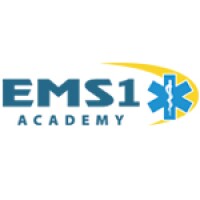The EMS1 Academy features the “Pediatric Shortness of Breath,” a one-hour accredited course for EMS providers. Complete the course to learn more about the management of the pediatric patient with shortness of breath. Visit EMS1 Academy to learn more and for an online demo.
We’ve probably all seen construction scaffolding. A foundation is laid for the building. This supports all the floors to come, and the building grows – just like scaffolding in education: our students need that foundational level of knowledge to which they can add more information. We often teach our students how to perform tasks that have many steps that need to be performed in order: competency-based medical education. If something is skipped or performed incorrectly early on in the task, the result could be disastrous in our patient’s care. So, we start from the simplest tasks and information and move on to the more complex. In other words, we are scaffolding.
Instructional scaffolding helps the students to complete a task that they cannot do on their own, constantly keeping them in their zone of proximal development. This lends itself well to problem-based learning, which is highly structured and scaffolded, where students work together to solve a problem, similar to how they would in the emergency services field. However, in order to solve the problem, they need the knowledge and skills to do so. Students cannot just take in all the knowledge we have to give them though; we have to break it down into manageable pieces so we don’t overwhelm them.
Importance of scaffolding in EMS education
By presenting only small pieces of information at a time and adding those chunks of information to previously learned knowledge, we simulate the way the brain works. When our brain encounters information, it first determines whether or not we already know about the subject.
Information that we use frequently is much easier to recall than information that we rarely use or that is unfamiliar to us, such as how to hang a dopamine drip manually if you’re used to having a pump. Associated information is easier to remember because we have a strong pathway. When we encounter new information, our brain must form new neural connections.
Let’s say we’re using problem-based learning to teach assessment and treatment of chest pain. For example, let’s say we first teach the anatomy and physiology. Then we teach signs and symptoms. Then we teach causes. Then we teach treatments. Each time, we are adding new information related to chest pain so that our students go from a foundation to high-rise tower over time by building on the initial information, floor by floor.
This process helps us to control learners’ frustration and specify important elements in their learning. At each point, we have identified the critical points that students need to get to. As they accomplish each one, they build another floor onto their foundation.
Using scaffolding to frame EMS training
Scaffolding can be incorporated throughout the lesson. At the beginning of the lesson, we prime students by gaining their attention and introducing them to the concept. We can use questions and discussion to draw out prior knowledge that they already have. If this is not the first time students are encountering the information, such as the next lesson in a series or reviewing assigned reading, we may try to trigger their brains to recall the information they have already covered.
When showing students a skill for the first time, there are many approaches we can take. One that is popular in emergency services education is, “I do it, we do it, you do it,” or “whole-part-whole.”
We scaffold the entire problem for students to work through. At key junctures throughout the problem, they must make decisions on what to do. We help them make those decisions by providing support and probing for understanding. When students make a correct decision, we often want to ensure that they understand why their decision is correct.
However, when the student answers incorrectly, this is a chance to examine their thought process and identify where their line of thinking went wrong. The student has a weak spot in their foundation that you have the opportunity to fix. Once corrected, we can help them move on to the next challenge.
Scaffolding in action
Consider a complex task or concept that you teach. Let’s apply scaffolding to it:
- What are all the parts of this task or concept?
- Chunk the information into manageable tasks that won’t overwhelm the students.
- Identify the pain points – what do students have to be able to do or know before they can move on?
Once you’ve identified these elements, you’re ready to scaffold your own learning.
References
1. Jin, J., & Bridges, S. M. (2014). Educational technologies in problem-based learning in health sciences education: a systematic review. Journal of Medical Internet Research, 16(12), e251. doi:10.2196/jmir.3240
2. Pero, R., & Marcotte, L. (2019). Scaffolding for assessment success: using gradual release of responsibility to support resident transition to competency-based medical education. Canadian Medical Education Journal, 10(3), e110–e112.














